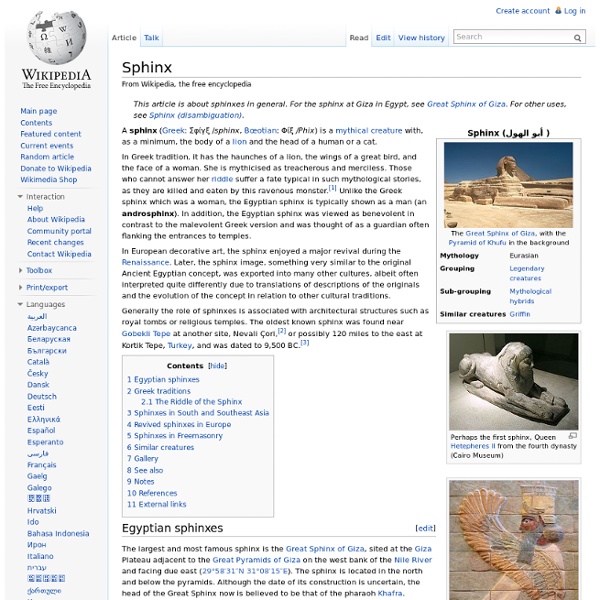Ancient Egyptian religion
Ancient Egyptian religion was a complex system of polytheistic beliefs and rituals which were an integral part of ancient Egyptian society. It centered on the Egyptians' interaction with many deities who were believed to be present in, and in control of, the forces and elements of nature. The practices of Egyptian religion were efforts to provide for the gods and gain their favor. Individuals could interact with the gods for their own purposes, appealing for their help through prayer or compelling them to act through magic. The religion had its roots in Egypt's prehistory and lasted for more than 3,000 years. Theology The beliefs and rituals now referred to as "Ancient Egyptian religion" were integral within every aspect of Egyptian culture. Deities The gods Osiris, Anubis, and Horus, in order from left to right The Egyptians believed that the phenomena of nature were divine forces in and of themselves. Amun-Ra kamutef, wearing the plumed headdress of Amun and the sun disk representing Ra
Ogdoad
In Egyptian mythology, the Ogdoad (Greek "ογδοάς", the eightfold) were eight deities worshipped in Hermopolis during what is called the Old Kingdom, the third through sixth dynasties, dated between 2686 to 2134 BC. In Egyptian mythology[edit] Together the four concepts represent the primal, fundamental state of the beginning. They are what always was. The entity containing Ra is depicted either as an egg or as a lotus bud. In the former version, a mound arises from the waters. In Gnosticism[edit] The number eight plays an important part in Gnostic systems, and it is necessary to distinguish the different forms in which it appeared at different stages in the development of Gnosticism. In the system of Valentinus, the seven heavens, and even the region above them, were regarded as but the lowest and last stage of the exercise of creative power. 7 + 1[edit] Seven heavens[edit] Eighth sphere[edit] The mysteries of the number seven are treated of by Clem. 6 + 2[edit] First Ogdoad[edit] 4 + 4[edit]
Maat
The earliest surviving records indicating Maat is the norm for nature and society, in this world and the next, were recorded during the Old Kingdom, the earliest substantial surviving examples being found in the Pyramid Texts of Unas (ca. 2375 BCE and 2345 BCE).[2] Later, as a goddess in other traditions of the Egyptian pantheon, where most goddesses were paired with a male aspect, her masculine counterpart was Thoth and their attributes are the same. After the rise of Ra they were depicted together in the Solar Barque. After her role in creation and continuously preventing the universe from returning to chaos, her primary role in Egyptian mythology dealt with the weighing of souls that took place in the underworld, Duat.[3] Her feather was the measure that determined whether the souls (considered to reside in the heart) of the departed would reach the paradise of afterlife successfully. Maat as a principle[edit] Winged Maat Maat and the law[edit] Maat wearing feather of truth See also[edit]
Seshat
In Egyptian mythology, Seshat (also spelled Safkhet, Sesat, Seshet, Sesheta, and Seshata) was the Ancient Egyptian goddess of wisdom, knowledge, and writing. She was seen as a scribe and record keeper, and her name means she who scrivens (i.e. she who is the scribe), and is credited with inventing writing. She also became identified as the goddess of architecture, astronomy, astrology, building, mathematics, and surveying. These are all professions that relied upon expertise in her skills. She is identified as Safekh-Aubi in some late texts.[6] In art, she was depicted as a woman with a seven-pointed emblem above her head. Usually, she is shown holding a palm stem, bearing notches to denote the recording of the passage of time, especially for keeping track of the allotment of time for the life of the pharaoh. She is frequently shown dressed in a cheetah or leopard hide, a symbol of funerary priests. Seshat assisted the pharaoh in the "stretching the cord" ritual. See also[edit] Seshat.
Egyptian mythology
Egyptian mythology is the collection of myths from ancient Egypt, which describe the actions of the Egyptian gods as a means of understanding the world. The beliefs that these myths express are an important part of ancient Egyptian religion. Myths appear frequently in Egyptian writings and art, particularly in short stories and in religious material such as hymns, ritual texts, funerary texts, and temple decoration. These sources rarely contain a complete account of a myth and often describe only brief fragments. The details of these sacred events differ greatly from one text to another and often seem contradictory. Mythology profoundly influenced Egyptian culture. Origins[edit] The development of Egyptian myth is difficult to trace. Another possible source for mythology is ritual. In private rituals, which are often called "magical", the myth and the ritual are particularly closely tied. Definition and scope[edit] Content and meaning[edit] Sources[edit] Religious sources[edit]




The word sphinx comes from the Greek Σφίγξ, apparently from the verb σφίγγω (sphíngō), meaning "to strangle".[3] This name may be derived from the fact that the hunters for a pride of lions are the lionesses, and kill their prey by strangulation, biting the throat of prey and holding them down until they die. The word sphincter derives from the same root. However, the historian Susan Wise Bauer suggests that the word "sphinx" was instead actually a Greek corruption of the Egyptian name "shesepankh," which meant "living image," and referred rather to the statue of the sphinx, which was carved out of "living rock" (rock that was present at the construction site, not harvested and brought from another location), than to the beast itself.[1] by nicktalop Dec 12